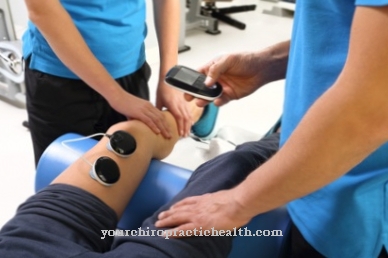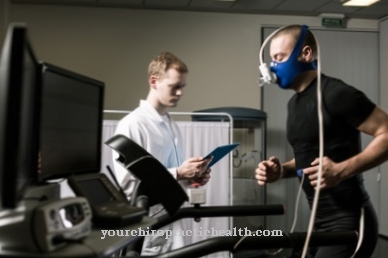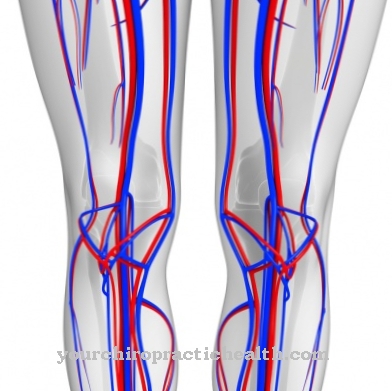The Newborn screening is a series of scheduled examinations on newborn babies in order to rule out congenital metabolic and hormonal diseases and to detect abnormalities in the infant at an early stage. Newborn screening is organized nationally and is usually started immediately after the birth in the maternity hospital while mother and child are still on the ward.
What is Newborn Screening?

In newborn screening, the newborn child is examined for congenital metabolic and hormonal disorders a few days after birth or as part of the U2. The aim of the newborn screening is to detect this at an early stage, since early treatment can often prevent severe consequential damage or a difficult future life for the baby. For this reason, the newborn screening is initiated in the maternity hospital if possible by taking blood from the baby's heel between 36 and 72 hours after birth. This corresponds to the third day of life and can already coincide with the U2 by the pediatrician.
If the mother leaves the maternity hospital with the child or gives birth at another location, she has to visit the pediatrician anyway and should combine this with the newborn screening in this time window. In addition to the conventional newborn screening, there is also the extended newborn screening, in which up to 12 possible diseases are examined. In addition, there is a hearing screening, in which the function of the auditory sense organs is checked in order to intervene quickly if a disorder is detected.
The list of diseases examined includes disorders of the thyroid function, hormonal and metabolic diseases caused by the function of the internal organs, as well as some rare diseases, the non-treatment of which, however, would mean deep cuts in the everyday life of the child.
Function, effect & goals
The newborn screening is kept as little stressful as possible for the infant. At the appointment of the U2 or for an own examination, the attending physician takes blood from the heel, as this is quick and the newborn child feels the removal as little and as briefly as possible. The baby is then allowed to go back to the mother immediately and usually calms down quickly.
If the mother gives birth in a hospital or clinic, the newborn screening will be carried out there in consultation with her. If she wants to go home earlier or gives birth elsewhere, she has to visit the pediatrician herself for newborn screening. Newborn screening is carried out on every new baby in order to rule out serious and sometimes rare diseases with serious consequences for the baby at an early stage. It usually takes hours or days before the results of the blood test are available and the treating doctor can talk to the child's parents about the result of the newborn screening.
Although most newborn screenings do well, the goal of screening is to quickly identify congenital diseases. Metabolic diseases are often congenital and the first signs of it appear very quickly after birth. Since newborns are still very tender, a metabolic disease would of course be an immense burden in their first days. Above all, however, metabolic diseases in newborns can lead to serious consequential damage without treatment. If, on the other hand, they are recognized and treated at an early stage, damage can be minimized or even completely excluded and the foundation for a largely normal everyday life is laid.
Depending on the federal state, a test for cystic fibrosis can be added to the newborn screening, as this disease also requires immediate treatment in order to make everyday life easier for the infant and to maximize its quality of life. In some cases, the newborn screening can be moved forward or backward. However, a further check-up may then be necessary, as the best time window for the examination is between 36 and 72 hours after the birth. This also applies if complications arose during the birth and the newborn needs other treatment.
Risks, side effects & dangers
Only a blood sample is required for newborn screening. The baby will neither remember nor feel pain during the exam. Some babies may cry after a blood sample has been drawn, but their parents can usually calm them down quickly.
Breastfeeding or cuddling to calm down after the blood draw works very well. The blood sample is taken with a tiny needle so that complications such as bruises or even infections are extremely rare at the puncture site. Modern hygiene measures almost completely exclude this.
Special features of the newborn screening arise with prematurely born children. If the child is born a few days or even weeks later than expected or if there is uncertainty about the calculated delivery date, this is irrelevant and the result of the newborn screening is considered valid. Children who are born before the 32nd week of pregnancy or shortly thereafter and are therefore considered premature births are also examined after birth, but the screening must be repeated on the calculated date of birth.
In this phase of life it is possible that congenital metabolic diseases are not yet recognizable well enough in the blood count and only develop fully at the point in time when the child should have been born. The newborn screening is therefore repeated with a new blood sample within a few weeks after the birth.



























